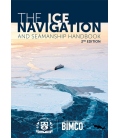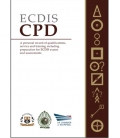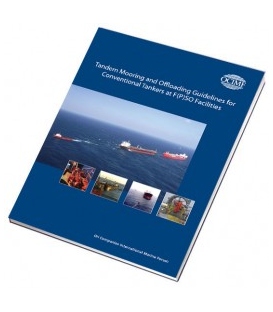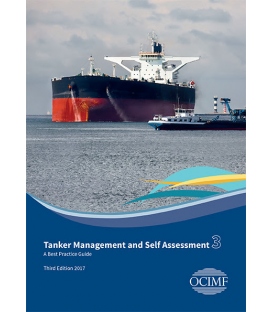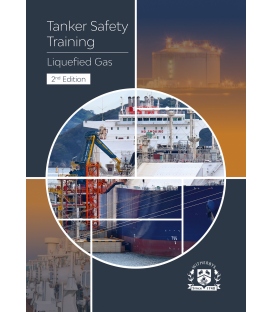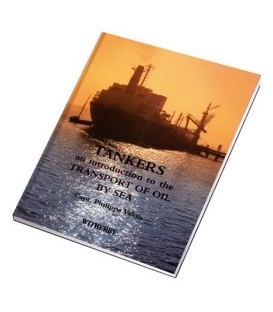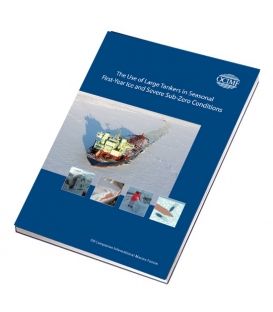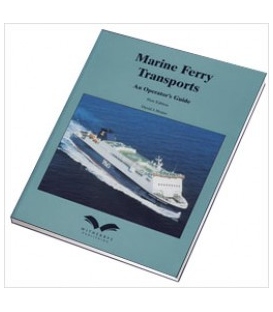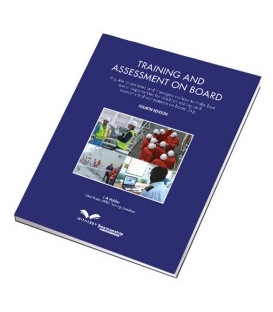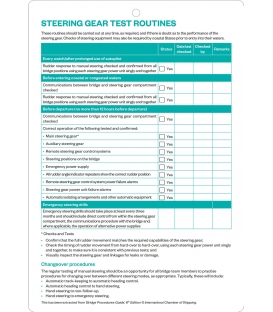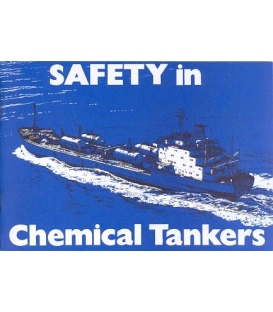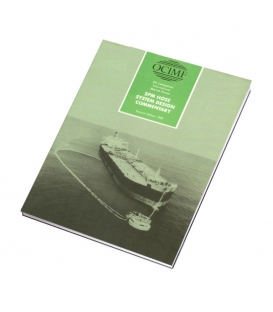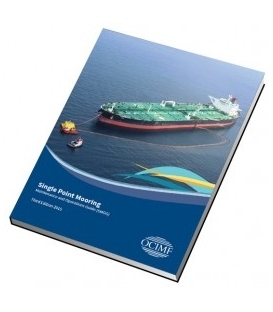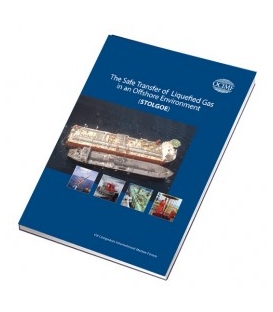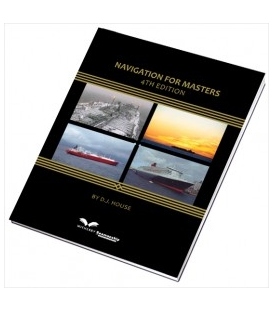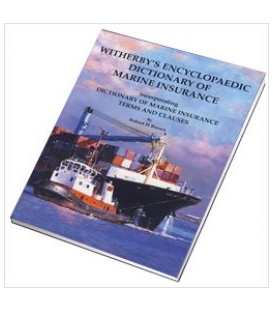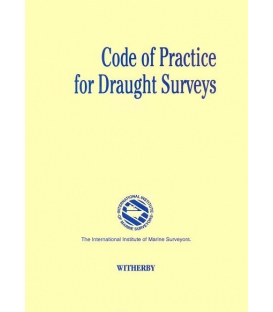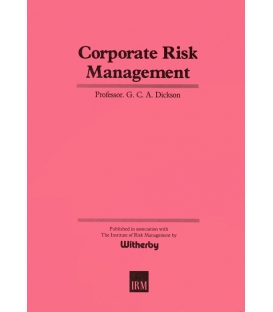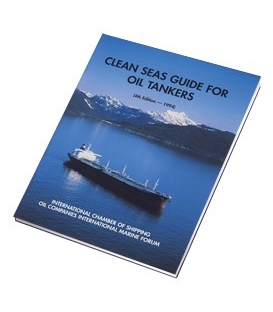- Home
- >
- Nautical Books
- >
- By Publisher
- >
- Witherby Seamanship International
- >
- Cyber Security Workbook for On Board Ship Use (7th Edition, 2026)
Categories
- CLEARANCE
- New Editions
- Nautical Charts
- Nautical Books
- E-Readers & E-Books
- Occupational Safety & Health Administration (OSHA)
- Destinations
- Code of Federal Regulations (CFR)
- USCG Exam Study Materials
- International Maritime Org. (IMO)
- Sealite Aids to Marine Navigation
- Flags
- Digital Charts
- Nautical Software
- Marine Supplies
- Navigation Equipment
- Intracoastal Waterway
- Ocean Cruising
- Great Circle Route
- Gift Shop
- CLEARANCE
- New Editions
- Nautical Charts
- Nautical Books
- E-Readers & E-Books
- Occupational Safety & Health Administration (OSHA)
- Destinations
- Code of Federal Regulations (CFR)
- USCG Exam Study Materials
- International Maritime Org. (IMO)
- Sealite Aids to Marine Navigation
- Flags
- Digital Charts
- Nautical Software
- Marine Supplies
- Navigation Equipment
- Intracoastal Waterway
- Ocean Cruising
- Great Circle Route
- Gift Shop


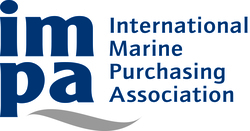
Sign up for our Newsletter
WICSWOBSU
New product
Cyber Security Workbook for On Board Ship Use (7th Edition, 2026)
Short Overview
It contains comprehensive checklists to support the day-to-day management of onboard cyber security and facilitates collaboration between ships, onshore IT departments and equipment manufacturers.
Detailed Overview
This Workbook has been designed as a practical, straightforward guide to support the Master and officers on board ship (Part I - Onboard Practical Considerations). It is designed to facilitate understanding and good collaboration between individual ships, onshore IT departments and equipment manufacturers (Part II - Shore Management Considerations). The Workbook may also be useful to the wider maritime industry.
The seventh edition has been produced by Witherbys, BIMCO and the International Chamber of Shipping (ICS).
The Workbook has been fully revised and updated and contains new guidance on:
- Industry guidelines and regulatory requirements, including IACS UR E26 and E27
- cyber security in port
- passenger ships
- ship inspections and port state control
- software updates
- malware detection and prevention
- phishing risks.
Detailed case studies and diagrams have been added to help illustrate cyber risks. The Workbook contains 13 checklists and 6 annexes, including Cyber Security Risk Assessment and Creating a Cyber Security Plan.
Contents Listing
Abbreviations/Definitions
Introduction
Section 1 - Regulations and Guidance
1.1 IMO Requirements
1.1.1 Designated Roles and Responsibilities
1.2 'The Guidelines on Cyber Security Onboard Ships'
1.3 Additional Industry Guidelines
1.3.1 International Association of Classification Societies (IACS)
1.3.2 Non-governmental Organisations (NGOs)
1.4 Regional Regulatory Guidance
1.4.1 UK
1.4.2 EU
1.4.3 USA
1.5 Guidance on Mitigation Strategies for IT
1.5.1 Essential Eight Maturity Model
1.5.2 Cyber Essentials
1.5.3 IMO Insider Threat Toolkit
Part One - Onboard Practical Considerations
Section 2 - Identifying Risks
2.1 Vulnerable Ship Systems
2.2 What is a Maritime Cyber Attack?
2.3 Phases of a Cyber Attack
2.4 Threats
2.5 Types of Cyber Attack
2.6 Social Engineering
2.6.1 Tailgating
2.6.2 Email Phishing
2.6.3 Spear Phishing
2.6.4 Man-in-the-middle Attacks
2.6.5 Phone or Text Messages
2.6.6 QR Code Phishing
2.6.7 Multi-factor Authentication (MFA) Phishing
2.7 Ransomware
2.8 Use of Artificial Intelligence
Section 3 - Protection and Prevention: General Principles
3.1 Prevention of Malware Attacks
3.2 Software Updates
3.2.1 Updating the Operating System (OS)
3.2.2 Updating Programs that are not Part of the Operating System
3.3 Endpoint Protection/Security Suite
3.3.1 Endpoint Protection Updates
3.3.2 Checking Whether the Endpoint Protection Suite is Up to Date
3.3.3 Other Security Tools in Windows
3.4 Passwords
3.4.1 Creating Passwords
3.4.2 Password Length
3.4.3 Managing Passwords
3.4.4 Handover of Passwords
3.4.5 Passkeys
3.4.6 Usernames
3.5 Cyber Security and the Safety Management System (SMS)
3.5.1 Cyber Security and the Ship Security Plan (SSP)
3.6 Ship Inspections and Port State Control (PSC)
3.6.1 Focus of Inspections
3.6.2 US Port State Control
3.6.3 European Union
3.6.4 Other Inspections
Section 4 - Crew Considerations and Training
4.1 Key Aspects of Crew Training
4.2 Cyber Security Familiarisation for Crew
4.3 Training for Non-crewmembers
4.4 Designing a Training Programme
4.5 Unintentional Cyber Breaches by the Crew
4.6 Planning a Crew Training Session
4.7 Cyber Security Drills
4.7.1 Generic Drill Scenario
4.8 Social Media
4.9 Travelling in Cyber Safe Mode
Section 5 - Detect, Respond and Recover: General Principles
5.1 Detecting a Cyber Incident
5.1.1 Introduction
5.1.2 Useful Tools Available to Help Detect Possible Malware
5.2 Incident Response
5.2.1 Third-party Support
5.2.2 Cyber Recovery Plan
5.2.3 Backups
Section 6 - External Communications and Cyber Security in Port
6.1 Satellite Communications (Satcom) Equipment
6.1.1 Satcom Passwords
6.1.2 Satcom Visibility on the Public Internet
6.1.3 Satcom Software Updates
6.1.4 Physical Security of the Satellite Terminal
6.1.5 Software Security of the Satellite System
6.2 Cyber Security Risks in Port
6.2.1 Mobile (Cellular) Data Connections
6.2.2 Connecting to Shore WiFi in Port
6.2.3 Port Cyber Attacks
Section 7 ? Ship's Business Systems
7.1.1 Segregated Networks
7.1.2 Achieving a Segregated Network
7.1.3 Maintaining a Segregated Network
7.1.4 Benefits of Network Segregation
7.1.5 Vulnerable Systems On Board
7.1.6 Defence in Depth and Breadth
7.2 Wireless Networks On Board
7.2.1 Business WiFi
7.2.2 Crew WiFi
7.2.3 Guest Access
7.2.4 WiFi Network Security
7.2.5 Virtual Private Network (VPN)
7.3 Onboard Business Computers
7.3.1 USB Ports and Drives
7.3.2 USB Port Blockers
7.3.3 USB Cleaning Stations
7.3.4 Tablets
7.3.5 Personal Devices and USB Ports
7.3.6 Configuring Business Computers to Minimise the Risks of Cyber Attack
7.4 Passenger Ship Systems
7.4.1 Passenger Services
7.4.2 Other Considerations
Section 8 - OT Systems
8.1 Understanding OT Systems
8.2 Engine Department Considerations
8.3 Cargo Management
8.4 ECDIS Security
8.4.1 Updates
8.4.2 Physical Security
8.4.3 ECDIS Recovery
8.4.4 Recognising Genuine NAVTEX Messages
8.4.5 Digital Navigational Data System (NAVDAT)
8.5 GNSS Security
8.5.1 GNSS Input Data
8.6 Other Bridge Systems
8.6.1 Voyage Data Recorder (VDR)
8.6.2 Automatic Identification System (AIS)
Part Two - Shore Management Considerations
Section 9 - Key Considerations
9.1 Cooperation Between the Office Departments and their Suppliers
9.1.1 IT Department and Technical Department - 'Secure by Design'
9.1.2 Securing the Supply Chain
9.1.3 Company Cyber Security Working Group
9.2 Cooperation Between the Office and the Ship's Crew
9.2.1 Maritime Cyber Security Management
9.2.2 Cyber Security and the Safety Management System (SMS)
9.2.3 Cyber Security and the Ship Security Plan (SSP)
9.2.4 Onboard Resources According to Ship Type
9.3 Ship?s Network Architecture
9.3.1 Industrial Demilitarised Zone (IDMZ)
9.3.2 Data Diodes (Unidirectional Gateways)
Section 10 - OT Systems Management
10.1 OT Asset Management and Risk Assessment
10.1.1 Asset Management
10.1.2 Asset Risk Assessment
10.2 Securing OT Systems
10.3 Securing the Ethernet IP Network Used by OT Systems
10.3.1 Converter Security
10.4 Intrusion Detection Systems (IDS)
Section 11 - IT Systems Management
11.1 Remote Access
11.1.1 Protection Measures
11.2 Vulnerability Scanning (Cyber Audit)
11.2.1 Performing a Vulnerability Scan
11.3 Penetration (Pen) Testing
11.3.1 Carrying out a Pen Test
11.3.2 Benefits of a Pen Test
11.4 Endpoint Detection and Response (EDR)
11.4.1 Extended Detection and Response (XDR)
11.5 Disaster Recovery from Backup
11.5.1 Backup Strategy
11.6 Uninterruptible Power Supply (UPS) for IT/OT Systems
Checklists
Checklist 1 - Cyber Security Familiarisation for New Crewmembers
Checklist 2 - Cyber Security Crew Training
Checklist 3 - Detecting a Cyber Incident
Checklist 4 - Responding to a Cyber Incident On Board
Checklist 5 - Onboard Business Computer
Checklist 6 - Network Segregation
Checklist 7 - Networks (Wireless and Wired)
Checklist 8 - Satellite Communications
Checklist 9 - OT Systems Initial Inspection
Checklist 10 - ECDIS Cyber Security
Checklist 11 - Cyber Security Checks on the Navigation Bridge
Checklist 12 - Asset Management and Risk Assessment
Checklist 13 - Remote Access
Annexes
Annex 1 - Cyber Security Assessment
Annex 2 - Creating a Cyber Security Plan
Annex 3 - Creating User Accounts
Annex 4 - Checking for Segregated Networks
Annex 5 - NMEA 0183
Annex 6 - Further Resources
About the Author
BIMCO is the world's largest direct-membership organisation for shipowners, charterers, shipbrokers and agents. In total, around 60% of the world?s merchant fleet is a BIMCO member, measured by tonnage (weight of the unloaded ships).
The organisation has NGO status and is based in Copenhagen, Denmark, with offices in Athens, Singapore and Shanghai.
With around 1900 member companies across 120 countries, from the largest shipowners in the world to small local port agents and law firms, BIMCO represents a wide range of maritime companies and organisations.
BIMCO's goal is to secure a level playing field for the global shipping industry. BIMCO therefore works to promote and secure global standards and regulations for the maritime sector. The organisation?s century long effort into creating standard contracts and clauses is an expression of that aim.
ICS
The International Chamber of Shipping (ICS) is the principal international trade association for the shipping industry, representing shipowners and operators in all sectors and trades.
ICS membership comprises national shipowners' associations in Asia, Europe and the Americas whose member shipping companies operate over 80% of the world's merchant tonnage.
Established in 1921, ICS is concerned with all technical, legal, employment affairs and policy issues that may affect international shipping.
ICS represents shipowners with the various intergovernmental regulatory bodies that impact on shipping, including the International Maritime Organization.
ICS also develops best practices and guidance, including a wide range of publications and free resources that are used by ship operators globally.
https://www.ics-shipping.org/about-ics/about-ics
Witherbys
Witherbys titles are developed using scripts developed by technical experts that are peer reviewed within work groups. Typically, they seek to improve understanding of the regulations, recommendations and guidelines issued by Industry.
Witherbys staff have significant expertise in the fields of navigation and hazardous cargoes as well as in the presentation of complex subjects in a graphic and easy to understand manner.
Reviews
30 other products in the same category:
- About Us
- Our Services
- Ordering & Shipping
- Resource Links
- Blog
- CLEARANCE
- New Editions
- Nautical Charts
- Nautical Books
- E-Readers & E-Books
- Occupational Safety & Health Administration (OSHA)
- Destinations
- Code of Federal Regulations (CFR)
- USCG Exam Study Materials
- International Maritime Org. (IMO)
- Sealite Aids to Marine Navigation
- Flags
- Digital Charts
- Nautical Software
- Marine Supplies
- Navigation Equipment
- Intracoastal Waterway
- Ocean Cruising
- Great Circle Route
- Gift Shop



